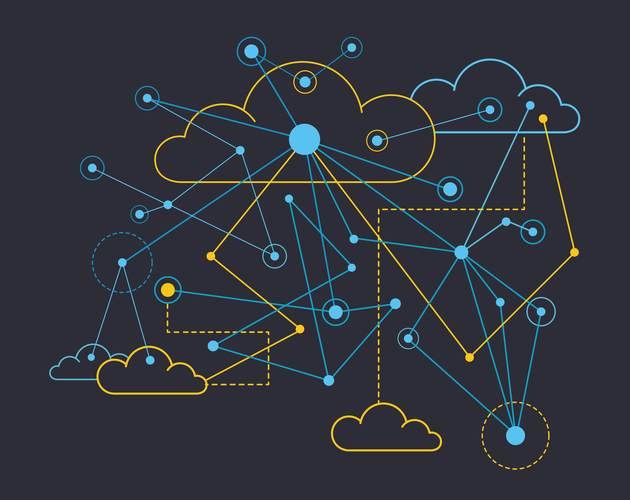Efficiency measures typically include financial measures evaluating the cost of care. These measures can include loss ratios , monthly costs per member, or costs for each episode of care. HPNs can improve efficiency though actions such as centralizing analytics or implementing infrastructure to provide support and education to providers as needed.

Fung said that a key challenge is the need for different approaches and strategies that need to be appropriately tailored. “Essentially, both insurers and individuals want the best available medical care and, as end payers, both want the reassurance that the care is affordable, and costs are transparent,” she said. “However, B2B and B2C marketing communications require different approaches, advertising mixes, and messaging.
Employers look behind the curtain
The work of establishing an HPN can be complex and challenging, with collaboration and engagement required from all stakeholders of the network. Consequently, HPNs are continuing to evolve and improve over time, and can offer important examples of strategies and tools to incentivize high-quality and efficient care. Rather than basing provider payments on a fee-for-service system, HPNs can incentivize providers to deliver high-quality, affordable care by linking payments to performance. While consumers wait for the price data to be made available in a useful format, many employers will be able to start looking right away for ways to save money on healthcare costs. For the first phase, insurers only need to make the rates available as a machine-readable file.

In general, an out-of-network provider may charge you whatever their billed rate is, no matter what your health insurance company says is a reasonable and customary fee for that service. Since your insurance company will only pay a percentage of the reasonable and customary fee (assuming your plan covers out-of-network care at all—many don’t), you will be on the hook for the entire rest of the bill with an out-of-network provider. Make note of the network of providers a health insurance company features to ensure your doctors and hospitals are in-network, as networks can vary significantly from plan-to-plan and insurer-to-insurer.
Do Health Insurance Companies Have Access to Your Medical Records?
A health insurance provider network is a group of healthcare providers that have contracted with a health insurance plan to provide care at a discount and accept the discounted price as payment in full. Based on the findings obtained here, it can be concluded that the selected digital health technologies can help to ensure access to health services for all social groups, which were restricted by COVID-19. At the same time, however, it is also clear to see a digital divide stratified by sociodemographic and socioeconomic healthcare software development determinants. Although the participants tend to be technology-savy, the use of these digital health technologies seems to be low across all population groups. While the COVID-19 pandemic appears to be an exceptionally strong influencing factor, the present results suggest that digital health technology use is related to external influencing factors that were not measured in this study. Now that consumers have unprecedented purchasing power and bear unprecedented costs , they expect iPhone-like service.

Given that data security is a concern across the healthcare space, any company interested in expanding its reach must have a strategic plan to put the necessary technologies into place, with a staffing initiative to match. Accenture’s global Insurance Consumer Study released in 2021 notes this technology hesitancy among consumers. Only 12% of the survey respondents stated their comfort with filing an insurance claim through an automated service over the phone, web, or email, and just 7% with a chatbot. A health insurance provider network is a network of medical professionals and facilities that have agreed to accept a discounted rate for members of a particular health plan. HMOs and EPOs generally don’t cover non-emergency care from an out-of-network provider, while PPOs and POS plans generally will (albeit with higher out-of-pocket costs than the person would pay if they saw an in-network provider).
The Business of Health Care in the United States
Critical to this kind of rollout is the need to get it right the first time by relying on AI and IoT development experts who understand the risks involved, and have the experience and knowledge to develop and implement error-free solutions. They should also be aware of the opportunities to use technology synergistically by pairing blockchain with AI, for example, so that as one technology implementation is being rolled out, it is not already becoming obsolete. Some technologies have been pushed to the forefront due to COVID-19 and social distancing requirements. This includes the aforementioned chatbots, which are low on the list of consumers’ preferred communication channels but whose use accelerated during the pandemic. Chatbots in healthcare are particularly fraught with potential issues because they deal with sensitive and urgent matters and rely on AI and machine learning to understand symptoms and map out suggestions. Health insurers may not be offering the diagnoses that a medical provider would, but can still garner goodwill by using chatbots effectively to make consumers’ lives easier rather than relegating them to an interminable automated phone menu.
- These are the groups that meet with the payers and also decide internally how gains are shared and how productivity is measured.
- The company must request this refund in writing and specify why it believes you owe a refund.
- Health care consumers in the U.S. can expect to encounter “in-” and “out-of-” network providers and services as they seek care.
- Chances are that the center at which you work has a strong contracting department.
- Regardless of nonprofit status, however, companies have few guardrails on how they spend their money, particularly with regard to executive salaries.
Decreasing denial rates even a little would generate significant revenue for providers. Greater collaboration could also enable both sides to reduce their administrative costs. Large health systems employ literally several thousand people – coders, revenue cycle managers, claims specialists, financial analysts, etc. – whose overarching job is to help providers get paid what they’re owed. Younger consumers have also shown themselves to be concerned with ideas of corporate social responsibility.
How can AI bring back the human element to travel insurance fraud investigations?
Offering bespoke plans could also persuade naysayers to engage in data sharing, if this option truly considers the specific needs of that consumer. By using individual and statistical data to deliver a customized plan, insurers can assure consumers that they are getting the best plan for their needs. However, an out-of-network provider might not file an insurance claim for you. In fact, many require that you pay the entire bill yourself and then submit a claim with your insurance company so that the insurance company can pay you back. That’s a lot of money upfront from you, and if there is a problem with the claim, you are the one who’s lost the money.

According to the National Association of Insurance Commissioners, in 2019 there were more than 900 health insurance companies in the US. However, the market is fairly concentrated, with the five largest insurance companies representing 45% of the total US market share. The health insurance industry has experienced substantial growth in the last five years, benefiting from both an aging population that requires more health services https://globalcloudteam.com/ as well as access to the previously uninsured through the ACA. Overall, health insurers fared well in 2020, as the pandemic curtailed medical claims related to expensive elective surgeries and other procedures, while sharply reducing doctor visits. At the same time, high costs for COVID-19 treatment have been largely subsidized by the federal government, which allocated $175 billion in funds for doctors and hospitals in 2020.
Cut the jargon and make health information easier to understand
Insurers can provide the data, systems and analytical insights that help inform the physician’s care strategy. Implementing value-based payments requires the two groups to build trust and work together to change long-established systems. We have taken the approach that it is better to pay a larger share in the upfront premium to minimize, as much as possible, costs that are incurred at the time of service. The reason for our thinking is that we don’t want any barrier to care, such as a high copay at the time of service, to discourage students from getting care. When it comes to meeting healthcare consumers’ expectations, health insurers have a lot of room to improve. Digitizing your healthcare contact center can greatly improve the member experience — while helping you save money.
Senate scrutinizes MA payment denials, including use of algorithms – Healthcare Dive
Senate scrutinizes MA payment denials, including use of algorithms.
Posted: Thu, 18 May 2023 15:43:31 GMT [source]
Medical providers.Your medical provider can’t share your medical information with another medical professional unless you provide permission in writing. If you need to see a specialist or are changing primary care doctors, you’ll be given a form to fill out to request the records transfer. Your medical provider will only share as much information as needed to satisfy the insurance company’s medically necessary criteria. For example, they may share a basic description of your symptoms or tell the insurance company about over-the-counter medications that you used before seeking additional treatments. To be considered accessible, the network should contain a sufficient number and array of providers to meet the diverse needs of the insured population and to ensure that all services will be accessible without undue delay. This includes being geographically accessible (i.e., meeting time/distance standards) and being accessible for people with disabilities.
Get the latest articles in your inbox.
But broad network PPOs tend to appeal to sick enrollees—despite the higher premiums—because they allow access to a wider range of specialists and medical facilities. Since health plans can no longer discriminate against sick enrollees by denying them coverage, many carriers have opted to limit their networks instead. If you participate in a risk contract or an ACO, you may still get paid on a fee-for-service basis through the insurance company. That could add to the frustration that Mitchell and others say employers have with the current health insurance system.








